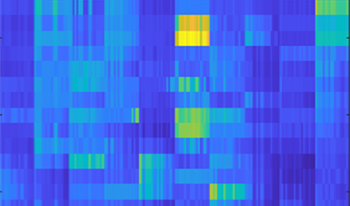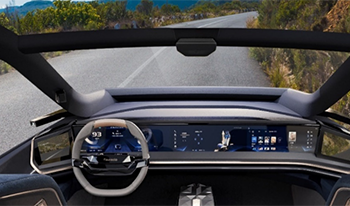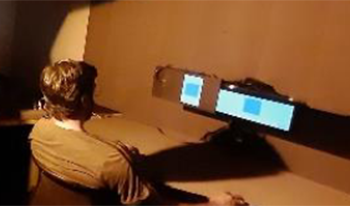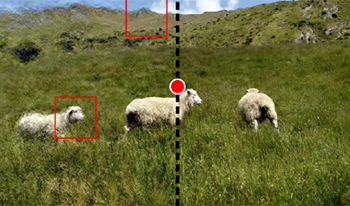

Novel display devices and fabrication techniques enable highly tangible ways of creating, experiencing, and interacting with digital content. The capabilities offered by these new output devices, such as virtual and augmented reality head-mounted displays and new multi-material 3D printers, make them real game-changers in many fields. At the same time, the new possibilities offered by these devices impose many challenges for content creation techniques regarding quality and computational efficiency. This paper discusses the concept of perception-aware optimizations, which incorporate insights from human perception into computational methods to optimize content according to the capabilities of different output devices, e.g., displays, 3D printers, and requirements of the human sensory system. As demonstrated in this paper, the key advantage of such strategies is that tailoring computation to perceptually-relevant aspects of the content often reduces the computational cost related to the content creation or overcomes certain limitations of output devices. Besides discussing the general concept, the paper presents several specific applications where perception-aware optimization has been proven beneficial. The examples include methods for optimizing visual content for novel display devices that focus on perceived quality and new computational fabrication techniques for manufacturing objects that look and feel like real ones.

The Contrast Sensitivity Function (CSF) is an integral part of objective foveated image/video quality assessment metrics. In this paper, we investigate the effect of a new eccentricity-dependent CSF model on the performance of the foveated wavelet image quality index (FWQI). Our results do not show a considerable change in FWQI performance when it is evaluated against the LIVE-FBT-FCVR 2D dataset. We argue that the resolution of the head-mounted display used in the subjective experiment limits our ability to reveal the anticipated effect of the new CSF on FWQI performance.

Image enhancement and image retouching processes are often dominated by global (shift-invariant) change of colour and tones. Most “deep learning” based methods proposed for image enhancement are trained to enforce similarity in pixel values and/or in the high-level feature space. We hypothesise that for tasks, such as image enhancement and retouching, which involve a significant shift in colour statistics, training the model to restore the overall colour distribution can be of vital importance. To address this, we study the effect of a Histogram Matching loss function on a state-of-the art colour enhancement network — HDRNet. The loss enforces similarity of the RGB histograms of the predicted and the target images. By providing detailed qualitative and quantitative comparison of different loss functions on varied datasets, we conclude that enforcing similarity in the colour distribution achieves substantial improvement in performance and can play a significant role while choosing loss functions for image enhancement networks.

Evolution of displays in various industries such as consumer electronics, aerospace, automotive, gaming and digital signage has been a key factor to engage and satisfy consumers. In this talk, I focus on Automotive market as one of the fastest growing display markets, but most discussed matters are applicable to other display verticals. Perceptual and Immersive display user experience are attracting more manufacturers these days to build products matching the end user’s expectation and needs while interacting with displays such as: perfect visibility in all conditions, personalization, less eye fatigue, seamless interaction - in one word “mimic real world” experience. Hardware and software advancements are critical but not enough to fulfil today’s knowledgeable consumer demands. The User Experience has become one of the highest priorities leading companies to develop dedicated user experience or UX teams to study the need of the end user. Multi-disciplinary teams of experts are built to tackle the UX optimization challenge._x005F_x000D_ _x005F_x000D_ In this talk I will share our experience evangelizing the benefits of Perceptual displays, challenges of such evangelism, productization of it and most importantly measuring the performance of perceptual displays in a comparable way to traditional displays.

Color Acceptability is a complex phenomenon. Contrary to perceptibility, color acceptability is defined as the level of color difference that is considered under the limit of preferred color reproduction on two media. A system comprising two automotive OLED and LCD displays was used in this experiment. A previous study (presented at [1]) by the authors had identified this limit for a daylight scenario where an external illumination of 3000 Lux at 5300K was illuminating the surface of the displays. In this study a night-time driving scenario was simulated with a projector light source illuminating the displays at 50 lux and 1318K. Statistical analysis is used to quantify statistically significant differences between various conditions. _x005F_x000D_ Introduction

Mismatches between ambient illumination levels and display luminance can cause poor viewing experiences. This paper explores the influence of chromaticity differences between illumination and display on viewers’ subjective evaluations of color appearance, preference, and visual comfort when watching videos. Results show that when the chromaticity biases of display and illumination are incongruent, viewers like the video less than when the biases are congruent, and find its colors abnormal.

This paper considers the problem of how to display visual space naturalistically in image media. A long-standing solution is linear perspective projection, which is currently used in imaging technologies from cameras to 3D graphics renderers. Linear perspective has many strengths but also some significant weaknesses and over the centuries alternative techniques have been developed for creating more naturalistic images. Here we discuss the problem, its scientific background, and some of the approaches taken by artists and computer graphics researchers to find solutions. We briefly introduce our own approach, which is a form of nonlinear 3D geometry modelled on the perceptual structure of visual space and designed to work on standard displays. We conclude that perceptually modelled nonlinear approaches can make 3D imaging technology more naturalistic than methods based on linear perspective.

SGD (Stochastic gradient descent) is an emerging technique for achieving high-fidelity projected images in CGH (computer-generated holography) display systems. For real-world applications, the devices to display the corresponding holographic fringes have limited bit-depth depending on the specific display technology employed. SGD performance is adversely affected by this limitation and in this piece of work we quantitatively compare the impact on algorithmic performance based on different bit-depths by developing our own algorithm, Q-SGD (Quantised-SGD). The choice of modulation device is a key decision in the design of a given holographic display systems and the research goal here is to better inform the selection and application of individual display technologies.

_x005F_x000D_ Inventing immersive displays that can attain realism in visuals is a long standing quest in the optics, graphics and perception fields. As holographic displays can simultaneously address various depth levels, experts from industry and academia often pitch these holographic displays as the next-generation display technology that could lead to such realism in visuals. However, holographic displays demand high computational complexity in image generation pipelines and suffer from visual quality-related issues. _x005F_x000D_ _x005F_x000D_ This talk will describe our research efforts to combine visual perception related findings with Computer-Generated Holography (CGH) to achieve realism in visuals and derive CGH pipelines that can run at interactive rates ( above 30 Hz). Specifically, I will explain how holographic displays could effectively generate three-dimensional images with good image quality and how these images could be generated to match the needs of human visual perception in resolution and statistics. Furthermore, I will demonstrate our CGH methods running at interactive rates with the help of learning strategies. As a result, we provide a glimpse into a potentialfuture where CGH helps to replace twodimensional images generated on today's displays with authentic three-dimensional visuals that are perceptually realistic.